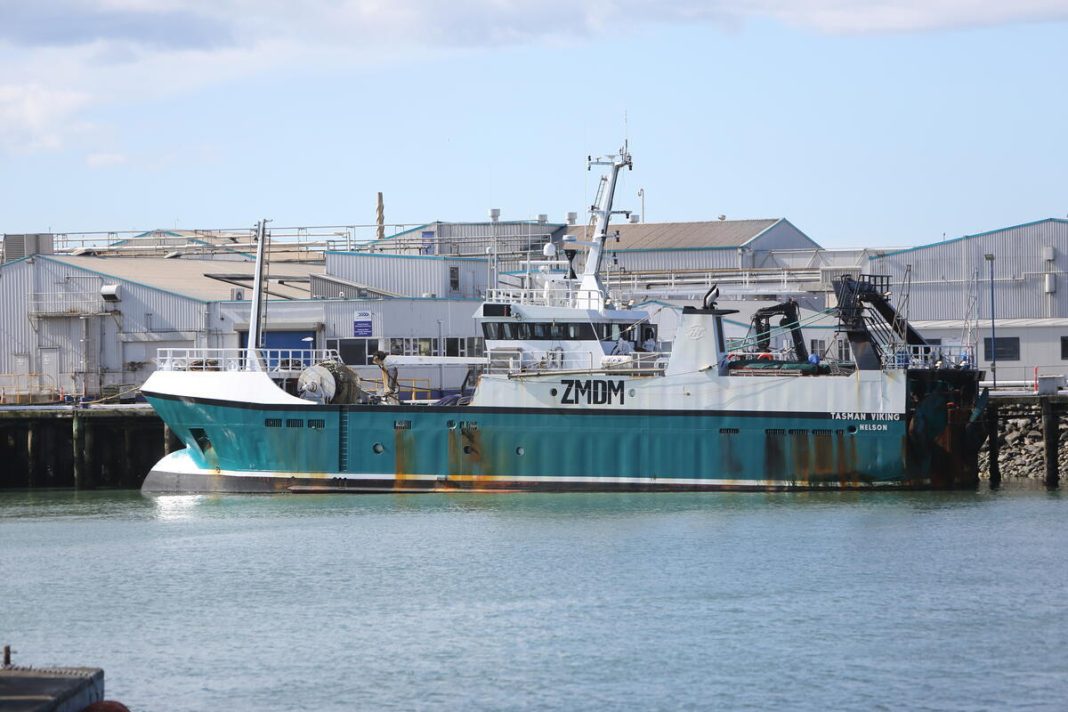SYDNEY, Friday 01 November 2024 – Reports that a New Zealand trawler has destroyed almost 40 kilograms of deep sea corals in a region of the Pacific Ocean earmarked for protection between Australia and New Zealand highlights the need for swifter government action to protect the ocean, says Greenpeace Australia Pacific.
The Tasman Viking, which is owned by Westfleet, pulled up several species of deep sea coral while trawling in international waters of the Tasman Sea last month, just days before the Nature Positive Summit where Environment Minister Tanya Plibersek announced a scientific symposium for the same area, describing it as “a unique landscape”.
The incident happened on Lord Howe Rise, a region renowned for diverse marine life, including corals, sponges, whales and seabirds, triggering an international fishing rule that will see the area temporarily closed to trawling and countries with a fisheries interest in the area notified.
Greenpeace Australia Pacific senior campaigner Vaiolette Snow called the incident an outrage and said Australians would be shocked to know trawling is allowed in ecologically significant areas of the high seas off Australia’s coast.
“New Zealand trawlers are carving a trail of destruction in the ocean between Australia and New Zealand – it’s an outrage. Bottom trawlers are tearing up ancient coral gardens and scarring the seafloor in our big blue backyard, with devastating consequences to the ocean, which is already under mounting pressure from overfishing, climate change and pollution. It is deeply concerning that such a practice is still allowed,” said Snow.
“New Zealand trawling in the Tasman Sea flies in the face of what the Australian government is championing – healthy, protected and flourishing high seas. Australia must take a stand on the world stage and show actual leadership by ratifying the Global Ocean Treaty now.”
The incident comes as a New Zealand super trawler was allowed to return to Australian waters this winter to target a threatened fish species, despite fears the trawling was linked to a decline in the orange roughy population.
Last year Westfleet, which is partly owned by Sealord, was fined over $52,000 and The Tasman Viking convicted following an incident where rare bamboo coral, pulled up in trawl nets, was illegally released overboard before a fisheries observer had a chance to properly document it.
The incident also happened in the Lord Howe Rise region, and despite the conviction, The Tasman Viking was given a new high seas trawling permit in June 2024
Greenpeace Aotearoa oceans campaigner Ellie Hooper said this latest coral destruction by a New Zealand trawler is an embarrassment, calling it yet another example of how destructive bottom trawling is and why it must be banned.
“It’s reckless environmental vandalism to bulldoze coral, an essential building block for ocean life, especially in the middle of a biodiversity crisis”, said Hooper.
“New Zealand trawlers are the last, and only boats still bottom trawling the South Pacific high seas. As a country, we’re an outlier on this issue, flying in the face of the New Zealand public, who want bottom trawling banned from vulnerable areas, and the opinion of our international neighbours.”
Greenpeace and allies are calling for one of the world’s first global ocean sanctuaries to be created in this region. To do so, Australia must first ratify the Global Ocean Treaty to bring high seas protection into force.
Scientists agree that to help stave off the worst of the climate crisis at least 30% of the world’s oceans must be protected from industrial harms by 2030. Creating global ocean sanctuaries in international waters, those areas outside of any one country’s jurisdiction, will play a crucial role in achieving this 30×30 goal.
A recent report released by Greenpeace International shows that urgent action is needed to create marine protected areas. At the current rate of protection, it would take until 2107 to reach the 30×30 goal.
—ENDS—


